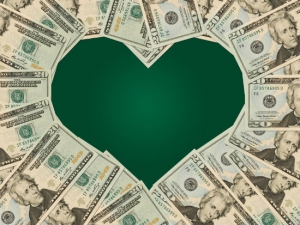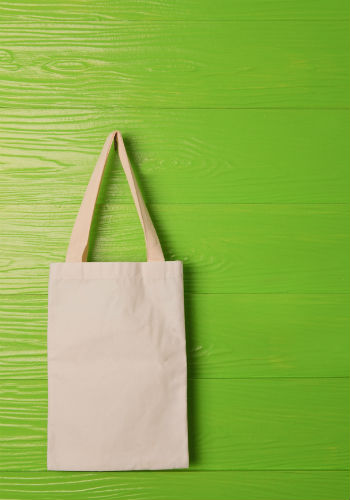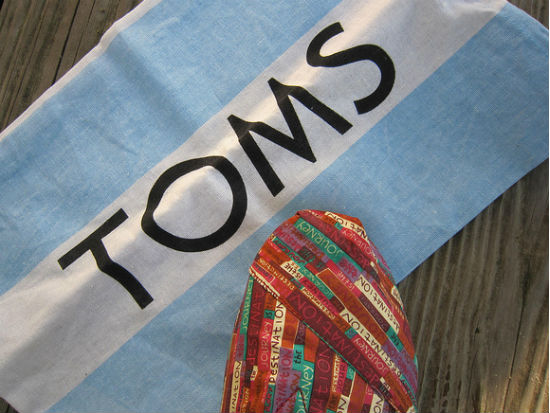 |
| Reviews and Templates for Expression We |
How brands can capture the heart of the green consumer

For most companies, the holy grail of sustainability is a breakthrough with consumers. Or more specifically, getting more consumers to buy truly sustainable products — even if they sometimes do cost more. But it seems as if we never really will get there and this is validated by the experts and leaders in the sustainability field.
Marc Gunther, a leading light in the sustainability field, wrote about the elusive green consumer, pointing out that while market research shows that consumers want greener products, their purchasing behavior doesn't follow suit. Similarly, Triple Pundit has shared statistics about consumers (becoming) increasingly skeptical of green products. And we were told by GreenBiz that we need a dose of reality when it comes to the presence (or absence) of green consumers.
It's enough to drive us crazy — this elusive pesky green consumer. Or maybe we need to reassess the ways we look at consumers when we use our sustainability lens.
But let's start with the question of whether consumer behavior has changed when it comes to sustainability. Is it true to think that consumer behavior hasn't changed?
Changing consumer behavior
Of course it has. It has changed around us every single day — and continues to do so. But it is difficult to see it grow. Maybe it is because we desire rapid and immediate change — whether the MTV generation or the reality show generation, we all want our "fix" right away. Quick fame and fast money.
But consumer behavior is less revolution and more evolution. Like everything else in evolution, it moves slowly but surely. But don't expect to see a big moment in time where it hits you in the face. You'll have more luck watching the grass grow or the paint dry. But over time, we have to recognize the changes.
Let's just consider how much the world has changed over the last 20 to 30 years.
Fair trade. Remember when Fair Trade was just a little sparkle in the eyes of activists? Today it continues to grow at a rapid pace, outstripping the growth of more "traditional" ways of doing business — growing globally by 12 percent in 2011 alone.
Auto. How are those hybrid sales going? Yes, they may still be behind traditional car sales but sales of electric and hybrid cars grew by 72 percent in 2012 and were the fastest growing sector in the U.S. automotive industry.
Cleaning & personal products. How about those Method guys? Or Seventh Generation? Or Greenworks? New cleaning products are coming onto the market almost daily. And how about Dove soap? It was "just another bar of soap" until Unilever adopted Real Beauty for Women, a popular social issue, and turned that into a core brand quality and differentiator. It didn't just transform the brand but changed the whole product category. And it was done focusing on one of the three key pillars of sustainability — social issues — and how that intersects with both the brand and the target consumers.
Clothing. TOMS has been a bit of a revelation, right? Patagonia continues to disrupt the marketplace through its edgy sustainability initiatives and positioning. Notice how clothing companies such as Levi's and Timberland are constantly bringing new sustainable products to the consumer and adding new value to their business top line and values bottom line. Timberland Earthkeepers played a key part in transforming the business during a difficult time for the company. Even today Earthkeepers is Timberland's fastest growing and largest product line.
Food. Have you noticed changes in your milk lately and how it doesn't have as many hormones or other unsavory ingredients in it anymore? Have you noticed how organic products have grown far faster than most other consumer products? Walk through grocery stores today and you'll see the huge variety of green, ethical, organic goods on the shelf today. No one thinks of Stonyfield Farms as some hippie yogurt business anymore. Or Ben & Jerry's as some small ice cream company.
Imagine how few of those products were on that same shelf 20 years ago. Many of these products have become mainstream. They are so much a part of our lives today that we forget that they are still new when considering the life of a consumer product.
Sales continue to grow each year and new products create breakthroughs almost continuously. And consumers are buying them. Some are growing fast and some not so fast. That is simply the nature of the beast — it grows and will continue to grow.
Evolving the market towards green
 Consumers
are already buying sustainable products. Getting them to buy a sustainable
lifestyle? That's the work of a brand. (Credit: stockphoto mania via
Shutterstock)Consumers are already buying sustainable products. Getting them to buy a sustainable lifestyle? That's the work of a brand. (Credit: stockphoto mania via Shutterstock)Just don't expect a revolution. It's not — it's an evolution. Maybe part of the reason is because of a natural progression along the hierarchy of increasingly rich societies and better-off people having different tastes, even if only marginally. Whatever the reasons, things happen but they usually happen slower than expected. Not every product is an iPhone — some take time to grow.
Consumers
are already buying sustainable products. Getting them to buy a sustainable
lifestyle? That's the work of a brand. (Credit: stockphoto mania via
Shutterstock)Consumers are already buying sustainable products. Getting them to buy a sustainable lifestyle? That's the work of a brand. (Credit: stockphoto mania via Shutterstock)Just don't expect a revolution. It's not — it's an evolution. Maybe part of the reason is because of a natural progression along the hierarchy of increasingly rich societies and better-off people having different tastes, even if only marginally. Whatever the reasons, things happen but they usually happen slower than expected. Not every product is an iPhone — some take time to grow.
Not only do consumers buy more sustainable products each day but companies are using this evolution to transform their products and brands to drive new growth in sales and consumer support. We need to realize that sustainable products have grown up faster than we did — and so have consumers.
We are wrong when we think consumers aren't buying into sustainability and aren't buying products and brands they believe add to a more sustainable lifestyle and world. They are, but not the way we want it.
And that is our problem, not theirs. This is a business problem to solve, not a consumer's. We know they want to buy sustainable products (or products with sustainability as part of the brand value proposition) and we know they want to buy more.
The biggest question isn't whether consumers are buying green or sustainable products. We know they are. And we know they want to buy more of these sustainable products. The problem is to find better ways to bring sustainability to life for the consumers in ways that will resonate with them, and foster even faster growth. To find the solution we need to look closer at brand — the soul of a product identity.
|
|
|
|
Copyright 2011 Energy and Technical Services Ltd. All Rights Reserved. Energyts.com |
